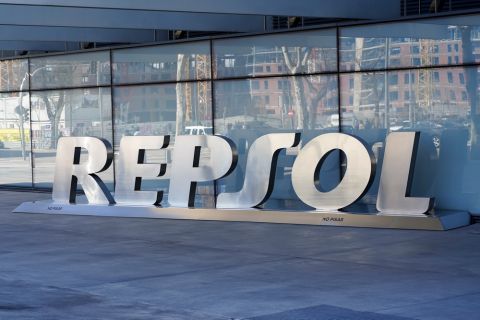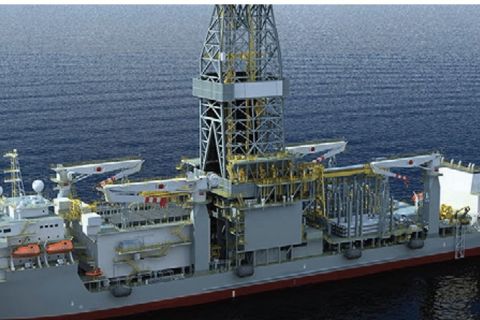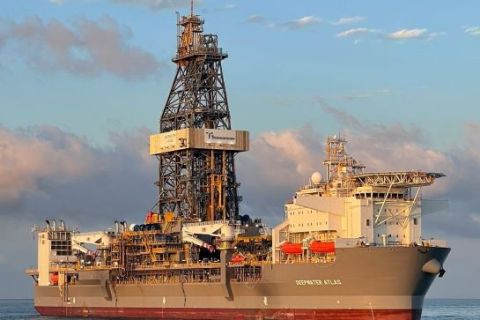With the global abundance of gas, particularly in North America, there is growing excitement about the use of liquefied natural gas (LNG) for the fuel market. This was a main focus of discussion at the LNG 17 conference held recently in Houston.
“We now have over 250 years of global reserves and still yet more to be found,” Anders Ekvall, vice president for Shell LNG Americas, told attendees at the largest global gas event ever held in the U.S. “By 2020, LNG could meet onefifth of the global gas needs. LNG is the ultimate pipeline in a way. It can go from anywhere to almost anywhere. And with that abundance and supply comes affordability and price stability. In the case of gas, it is a very acceptable fuel.”
The idea of using LNG for transportation is not new. For years, thousands of trucks, buses and marine fleets worldwide have utilized LNG as an alternative fuel, and the growth of the industry has increased the opportunity to employ the use of what Ekvall called “the most convenient fuel for domestic and commercial applications and a key complement to future energy.”
In use
Many North American companies are taking advantage of the recent opportunity and looking into the potential uses of LNG for their transportation needs. BNSF Railway Co., which consumes and spends mass amounts on railroad diesel each year, announced that the company would begin testing LNG-fueled locomotives. According to the company, BNSF will evaluate the potential cost and emission effects that will come with using the natural gas-based fuel. General Electric and Caterpillar’s EMD, two locomotive manufacturers, are working with BNSF to develop the new LNG-engine technology. The changing natural gas scene played a heavy role in the company’s recent decision to test the switch, BNSF chairman and chief executive, Matthew Rose, told attendees at this year’s CERAWeek conference.
“The use of liquefied natural gas as an alternative fuel is a potential transformational change for our railroad and for our industry,” said Rose. “The changed market for natural gas in the U.S. is a critical part of our decision to explore it as a locomotive fuel and in this pilot we will test natural gas engine technology in railroad service.”
LNG has also piqued the interest of the trucking industry. UPS announced plans to operate 700 LNG-fueled delivery vehicles in 10 states earlier this year. The company is also making an initial investment of $18 million to build four LNG refueling stations in Knoxville, Memphis and Nashville, Tennessee, and Dallas, as well as adding LNG trucks on routes throughout Texas. According to the company, once completed, UPS will operate the most extensive LNG fleet in the U.S.
But one unlikely industry could be the driving force for the LNG-fuel business. According to Zeus Development Corp. President Bob Nimocks, there are more than 12,000 quarrying and aggregate-pit operations throughout the U.S. These operations require the use of, on average, 50 to 75 heavy-duty trucks to move rocks and gravel, which at the time run mainly on diesel, costing the companies a significant amount.
“Rock quarrying is a fairly low-cost commodity, so fuel price is an extremely high percentage of its overall value. If you had to see a robust market for LNG for fuel savings, the quarrying and aggregate business is one of the best,” Nimocks told LNG 17 attendees. “If we look at the size of that market, it could potentially equal to about 60 million gallons per day or 36 million tonnes per year, which is about seven world-scale liquefaction trains.”
Switzerland-based Omya Inc., a global producer of industrial minerals, announced that at the company’s Florence, Vermont, facility its diesel-run dryer furnaces would soon be switched to LNG, and the company plans to install eight 15,000-gallon LNG storage tanks for the project. In conjunction with the project, an Omya executive said at a recent conference that the company is also interested in switching its 20 heavy-duty trucks to LNG at the Florence facility.
It’s A Small World
Traditional liquefied natural gas (LNG) value chains have relied on typical liquefaction facilities and regasification terminals, using traditional, conventional applications such as power plants. But LNG for transport relies on a not-so-traditional approach.
“Where the volumes are smaller, there are more customers involved,” Anders Ekvall, vice president for Shell LNG Americas, told attendees at the LNG 17 conference. In the past, we have been driving toward the larger LNG facilities, which is typically larger than 4 million tons per annum. We at Shell took a step back and said what can we do on the other side of the spectrum? What can we do on a smaller scale?”
To serve its marine and heavy-duty on-road customers, Shell is moving forward with its plans to build two North American small-scale liquefaction units. According to Ekvall, these units are movable modular-linked factory systems, or MMLS, which will each produce 0.25 million tons per annum of LNG. “This allows us to tap into smaller markets and smaller supply areas,” Ekvall said.
According to the company, the units will create two new LNG transportation corridors in the Great Lakes and Gulf Coast regions. Shell will install the first small-scale liquefaction plant at its Geismar, Louisiana, chemicals facility. This facility is intended to supply LNG to customers along the Mississippi River, the Intra-Coastal Waterway, offshore Gulf of Mexico and the onshore oil and gas exploration areas of Texas and Louisiana.
In the newly formed Great Lakes corridor, a small-scale liquefaction facility will be installed in Sarnia, Ontario. According to a company release, this facility will service customers along the Great Lakes, bordering U.S. states as well as nearby Canadian provinces.
Ekvall told the conference that Shell is also working on refueling infrastructure.
“On the Canadian side, we have teamed up with Shell Flying J to provide refueling for on-road trucking,” he said. “And we have recently announced a relationship with Travel Centers of America where we are working to pursue up to 100 refueling stations across the U.S. to enable truck operators to move from coast to coast and north to south using LNG as a fuel.”
Small-scale facilities can be useful for more than just transportation applications, according to industry experts. Advances in small-scale liquefaction technology can provide users with options such as electricity peak-shaving opportunities and help oil and gas producers in fields with limited pipeline and transportation infrastructure.
S-Con Inc. and BDL Fuels have entered the small-scale liquefaction market with their Supercool process, a modular system designed to produce between 5,000 and100,000 gallons per day. W.G. “Trey” Brown, S-Con’s vice president of engineering and construction, discussed the system in a presentation at the annual Gas Processors Association conference in San Antonio.
“There is all kinds of (gas) supply available now,” Brown told the conference, adding the challenge for midstream operators is “how can we make new uses happen?” Small-scale plants rather than large, world-scale LNG operations are the answer, he added.
The Supercool design focuses on field applications in producing areas that lack gas gathering and processing infrastructure—such as the Bakken play in North Dakota. But the system can be used anywhere. “As much as 30% of the Bakken’s associated gas is flared, that’s your money going up in smoke,” Brown told the audience.
The system relies on liquid-nitrogen refrigerant and can handle inlet feedstock compositions that range from pipeline-quality, pure methane to rich-gas streams from wells that are as high as 13 gallons of natural gas liquids (NGL) per thousand cubic feet and 25% nitrogen. A plant can recover essentially 100% ethane, producing a Y-grade-like, mixed NGL product in addition to transportation-grade LNG, according to Brown.
Trials are under way at an 11,000-gallon-per-day test plant that covers 8 feet by 40 feet, “it can fit in your backyard,” Brown added.
—By Jennifer Giambi and Paul Hart
Recommended Reading
Repsol to Drop Marcellus Rig in June
2024-04-26 - Spain’s Repsol plans to drop its Marcellus Shale rig in June and reduce capex in the play due to the current U.S. gas price environment, CEO Josu Jon Imaz told analysts during a quarterly webcast.
Valaris Updates Fleet Status
2024-02-19 - The backlog of these contracts and extensions is valued at $1.2 billion.
Transocean Releases Fleet Status Report
2024-02-15 - Transocean’s total backlog for its fleet is approximately $9 billion.
US Drillers Cut Most Oil Rigs in a Week Since November
2024-04-26 - The number of oil rigs fell by five to 506 this week, while gas rigs fell by one to 105, their lowest since December 2021.
TPH: Lower 48 to Shed Rigs Through 3Q Before Gas Plays Rebound
2024-03-13 - TPH&Co. analysis shows the Permian Basin will lose rigs near term, but as activity in gassy plays ticks up later this year, the Permian may be headed towards muted activity into 2025.




